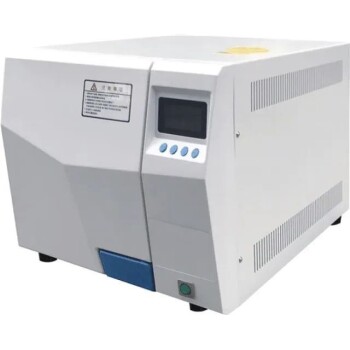Vacuum pumps are essential tools in laboratories and industrial settings, but their operation requires strict adherence to safety precautions to prevent accidents, equipment damage, and exposure to hazardous materials. Key safety measures include proper placement of pumps when handling toxic chemicals, regular maintenance, and the use of traps and filters to protect the pump and the environment. Additionally, following operational best practices, such as purging the pump after use and ensuring proper ventilation, is critical for safe and efficient performance. Below, the key safety precautions for vacuum pumps are explained in detail.
Key Points Explained:

-
Handling Toxic Chemicals Safely:
- Pumps used with highly toxic chemicals, such as chloroform, must be placed in a fume hood or vented to a dedicated lab exhaust system. This ensures that toxic vapors are not released into the laboratory environment.
- Adequate condensers and traps should be installed to capture and neutralize harmful vapors, preventing them from damaging the pump or posing health risks to operators.
-
Preventing Back Pressure:
- Never block the pump discharge outlet, as back pressure can reduce efficiency and cause serious internal damage to the pump.
- Ensure the pump outlet remains clear at all times to maintain optimal performance and prevent mechanical failures.
-
Using Secondary Traps:
- When using a mechanical pump instead of an aspirator, a secondary trap is necessary to prevent solvents from damaging the pump's membrane or being absorbed into the oil.
- This precaution is especially important when working with volatile or corrosive substances.
-
Purging the Pump After Use:
- After use, run the pump with the inlet closed and the gas ballast open for about 30 minutes. This purges any condensed vapors from the pump oil, extending the pump's lifespan and maintaining its efficiency.
- This practice is particularly important when working with condensable vapors.
-
Regular Maintenance:
- Always read and follow the manufacturer’s manual for specific maintenance instructions.
- Allow the pump to run for 30 minutes before connecting it to your application to ensure it is operating correctly.
- Use original manufacturer equipment oil mist filters for optimal performance and to protect the pump from contamination.
- Consider installing an inline oil filter for oil-based pumps to maintain oil quality and pump efficiency.
-
Using Cold Inlet Traps:
- Cold inlet traps are recommended to capture and condense vapors before they enter the pump, reducing the risk of contamination and damage.
-
Avoiding Orange Tubing:
- Orange tubing is not suitable for vacuum applications due to its permeability and potential to degrade under vacuum conditions. Use appropriate tubing materials that are compatible with vacuum systems.
-
Emptying Catch Pots:
- Regularly empty the inlet and outlet catch pots to prevent overflow and contamination. This simple step helps maintain the pump’s efficiency and reduces the risk of spills or exposure to hazardous materials.
-
Ensuring Proper Ventilation:
- Always operate vacuum pumps in well-ventilated areas or within fume hoods to prevent the buildup of hazardous vapors.
- Proper ventilation also helps dissipate heat generated by the pump during operation.
-
Universal Safety Principles:
- Regardless of the specific model or application, the principles of safe operation—such as proper placement, regular maintenance, and the use of traps and filters—are universally applicable. These principles ensure the safety and efficiency of vacuum pump operations across different setups.
By adhering to these safety precautions, operators can minimize risks, protect equipment, and ensure a safe working environment when using vacuum pumps.
Summary Table:
| Safety Precaution | Key Details |
|---|---|
| Handling Toxic Chemicals | Use fume hoods, install traps, and ensure proper ventilation. |
| Preventing Back Pressure | Keep pump discharge outlet clear to avoid damage. |
| Using Secondary Traps | Protect pump membranes and oil from solvents. |
| Purging the Pump After Use | Run pump with gas ballast open for 30 minutes to remove vapors. |
| Regular Maintenance | Follow manufacturer guidelines, use oil filters, and check performance. |
| Using Cold Inlet Traps | Capture vapors before they enter the pump. |
| Avoiding Orange Tubing | Use vacuum-compatible tubing to prevent degradation. |
| Emptying Catch Pots | Regularly empty to prevent overflow and contamination. |
| Ensuring Proper Ventilation | Operate in well-ventilated areas or fume hoods. |
| Universal Safety Principles | Apply proper placement, maintenance, and use of traps/filters universally. |
Ensure your vacuum pump operations are safe and efficient—contact our experts today for personalized advice!








